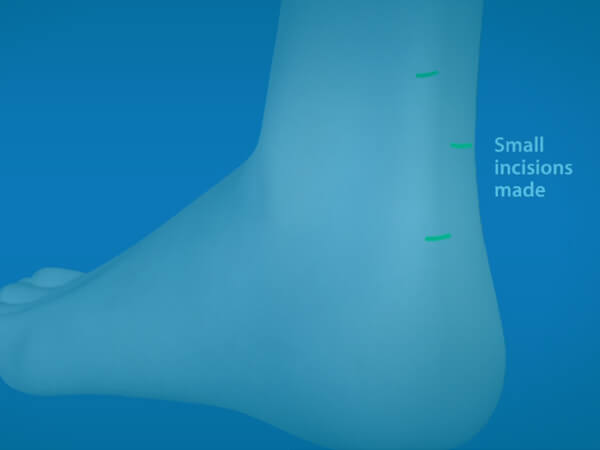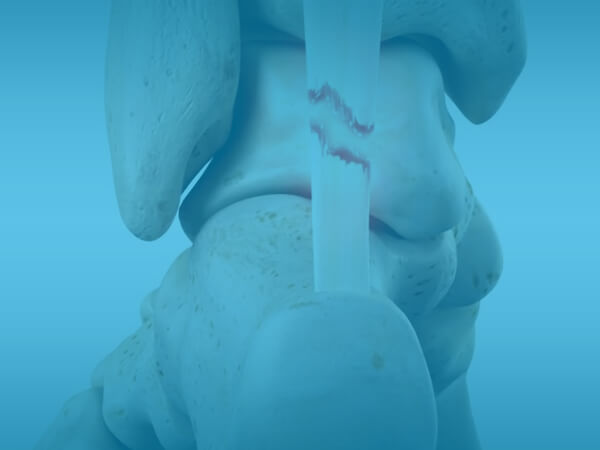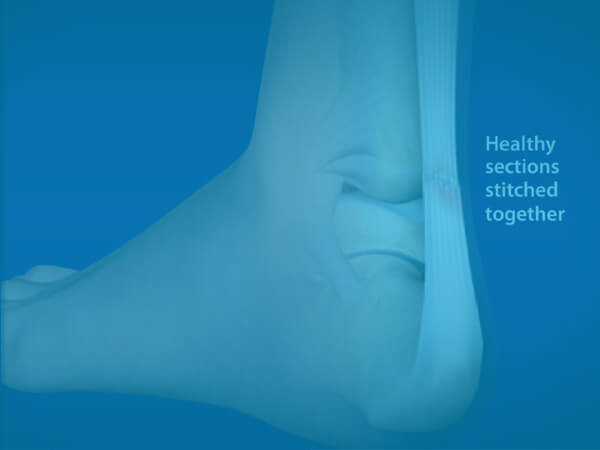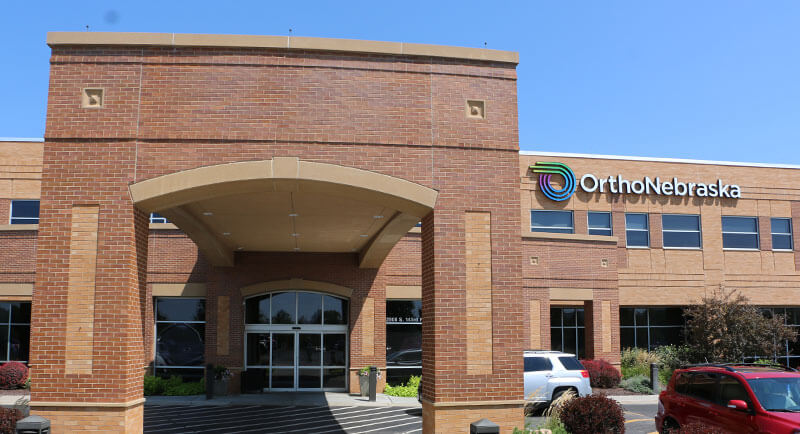What is an Achilles Repair?
A surgeon repairs the Achilles by making a small incision on the back of the leg near the rupture. Needles and sutures are passed through the tendon and tied together to restore its length and tension.
Who should have an Achilles Repair?
Though some people can recover from a torn Achilles without surgery, the recovery is difficult with mobility limitations for a long time. Most patients will opt for surgery.
Does an Achilles Repair work?
In general, OrthoNebraska’s two surgeons who specialize in only the foot and ankle feel that nearly all patients are satisfied with their results. However, it’s important to note that the Achilles is a delicate tendon and most repairs will not return the tendon to 100 percent of its original strength. A realistic expectation is 80-90 percent. Otherwise, the risks are the same as any other surgical procedures. The risk of re-rupturing your Achilles after a surgical repair is less than 4 percent.
What can I expect when I have an Achilles Repair?
You may need a pre-surgical physical to make any necessary accommodations based on your health history. When you arrive at the hospital, you’ll speak to your surgeon and anesthesiologist. You may be given a nerve block for pain after surgery. You will be put to sleep (general anesthesia) and be placed face down for the operation.
A physical therapist will help show you how best to get around, likely using crutches, after your surgery. You are very unlikely to be kept overnight, and you will need to have someone drive you home. Crutches may be necessary for most day-to-day tasks for a few weeks. Your physical therapist will help you progress back to full mobility.
Time off from work will be based on your mobility, but for office workers, 1-2 weeks is typical.










